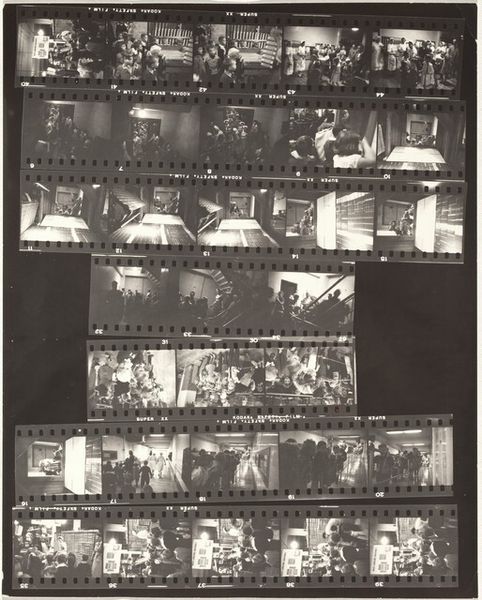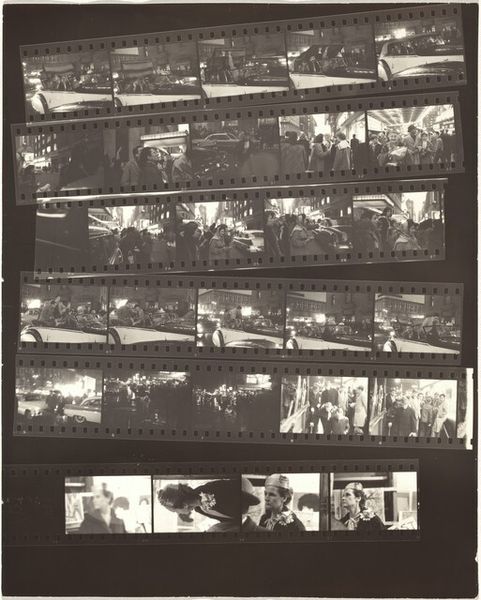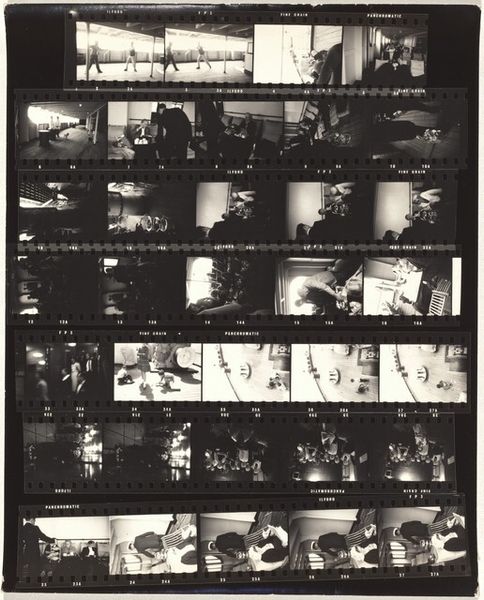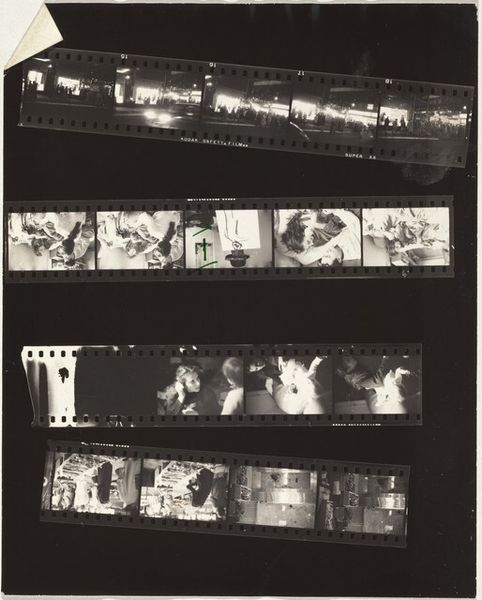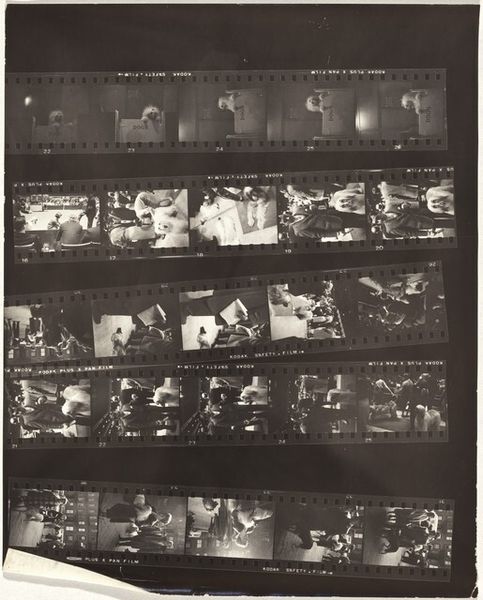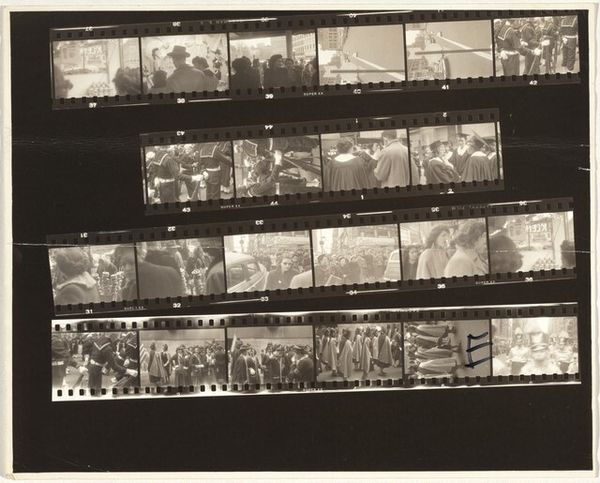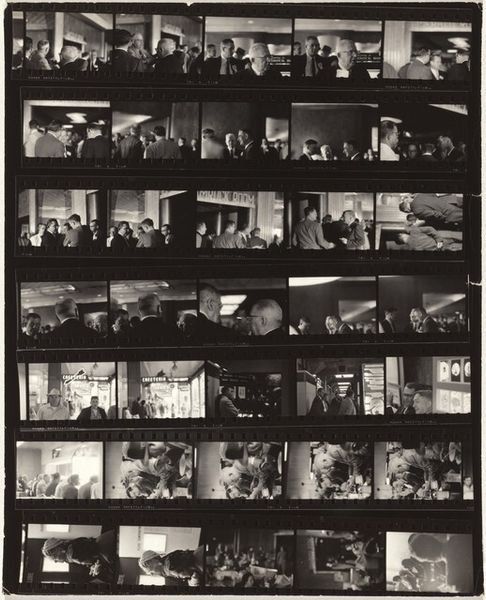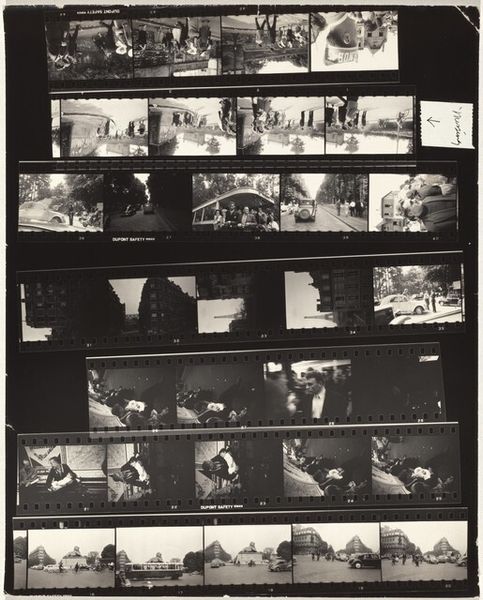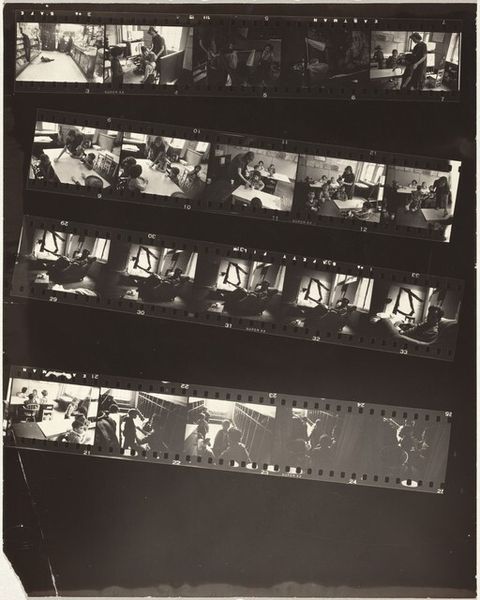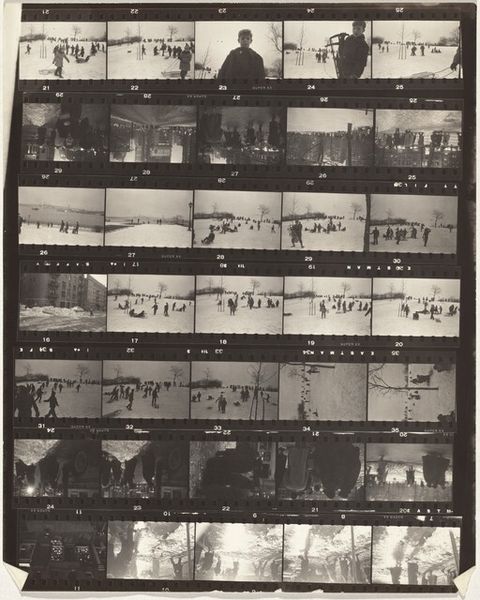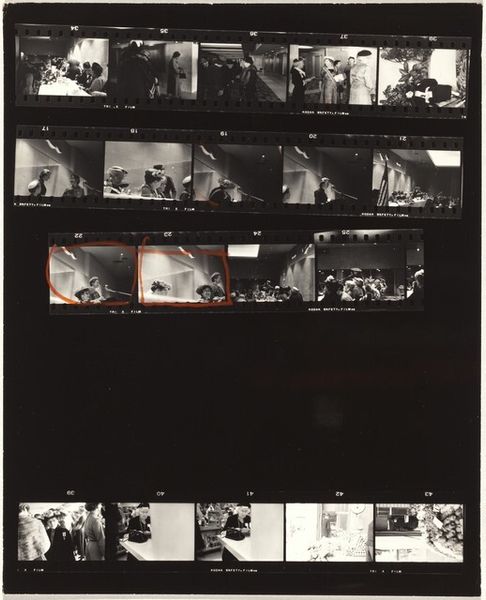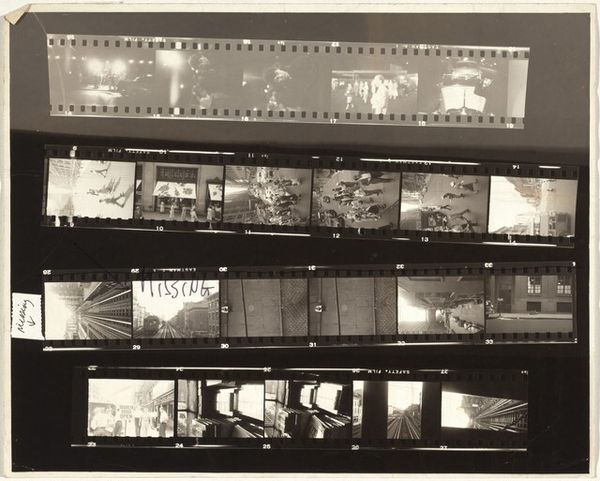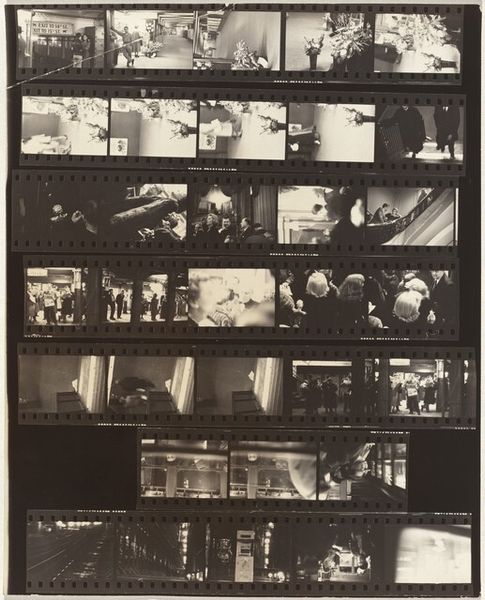
Dimensions: sheet: 25.3 x 20.2 cm (9 15/16 x 7 15/16 in.)
Copyright: National Gallery of Art: CC0 1.0
Editor: This is a photography contact sheet of sorts by Robert Frank, likely from 1953 or '54, part of the series "Miles Forst--New York City II". The multiple images create an overall feeling of documentation or maybe of building anticipation through repeated framing of similar elements. How do you interpret the feeling these strips of images evoke? Curator: For me, it’s all about that raw, almost frantic energy of post-war New York trying to capture that city’s pulse. The repetition you noticed, that layering, speaks to how one attempts to distill meaning from fleeting moments. Think of trying to recall a vivid dream - you get bits and pieces, right? Were all those frames part of a ceremony of sorts, or simple scenes of city dwellers in a crowded space? And then there’s that haunting negative space framing it all... Editor: I hadn't thought of the dream analogy, that really illuminates the almost ethereal nature of the dark scenes interspersed with portraits. Was Frank making a statement about how photographic images distort reality? Curator: Potentially! Frank seemed perpetually questioning and reinventing the notion of "reality" as perceived by popular views about art photography.. Think of the photograph as less a mirror and more of an X-ray – revealing layers that might otherwise stay hidden beneath the skin of our everyday experiences. Are you sensing an off-kilter dance between intimacy and distance in the images presented here? Editor: Absolutely. I'm noticing the subjects aren't really engaging with the camera directly. More like observing and existing within an unfolding reality. Curator: Precisely! It’s as if he caught them unawares. But also I think the photographer himself might not be so interested in the sitters as people, maybe interested in their location, light conditions...Frank makes it appear as if they are not so important! And this challenges what we may consider great art. Now isn't that something to ponder about later? Editor: That really shifted my perception. The unposed style felt unintentional at first, but now seems intentional in revealing something deeper about capturing time. Curator: Time moves, whether we're ready for it or not! Hopefully that’s one less brick for us in the journey to see the world.
Comments
No comments
Be the first to comment and join the conversation on the ultimate creative platform.
